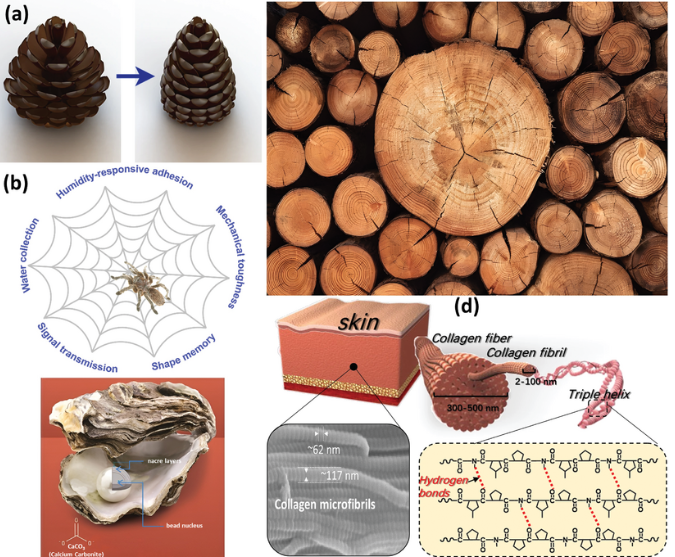Unleashing Innovation: From Carbon Fiber to Composite Filaments in Additive Manufacturing
- Aniksha Kar
- Apr 7, 2024
- 3 min read

Introduction: In recent years, additive manufacturing has revolutionized the way we produce goods, offering unparalleled flexibility and customization. A key factor in the evolution of this technology is the constant innovation in raw materials. One area that has seen significant advancements is the development of composite filaments, particularly those incorporating carbon fiber. In this blog, we delve into the exciting world of raw materials innovation, exploring the journey from traditional filaments to cutting-edge composite materials and their impact on additive manufacturing.Understanding Composite Filaments: Composite filaments are a class of materials created by combining two or more distinct components to achieve unique properties not present in either individual material. These components can include polymers, metals, ceramics, and fibers such as carbon or glass. The resulting composite combines the advantages of each constituent material, offering enhanced strength, stiffness, and other desirable characteristics.Carbon Fiber Reinforced Filaments: Carbon fiber reinforced filaments have emerged as a game-changer in additive manufacturing. Carbon fiber, known for its exceptional strength-to-weight ratio and rigidity, is incorporated into thermoplastic matrices to create filaments with superior mechanical properties. These filaments retain the ease of printing associated with traditional thermoplastics while adding strength and stiffness comparable to metals.Advantages of Carbon Fiber Composites in Additive Manufacturing:Enhanced Strength: Carbon fiber reinforcement significantly increases the strength of printed parts, making them suitable for demanding applications in aerospace, automotive, and engineering industries.Lightweight: Despite their impressive strength, carbon fiber composites are lightweight, making them ideal for applications where weight reduction is critical, such as aerospace and automotive components.Improved Dimensional Stability: The addition of carbon fiber enhances the dimensional stability of printed parts, reducing warping and distortion during the printing process.Heat Resistance: Carbon fiber composites exhibit excellent heat resistance, allowing them to withstand high temperatures without compromising their structural integrity.Design Flexibility: Composite filaments offer designers greater flexibility in creating complex geometries and intricate structures, thanks to their excellent printability and layer adhesion.Applications of Carbon Fiber Composite Filaments: The versatility of carbon fiber composite filaments has led to their widespread adoption across various industries. Some notable applications include:Aerospace Components: From structural elements to interior components, carbon fiber composite parts find extensive use in the aerospace industry due to their high strength-to-weight ratio and resistance to fatigue.Automotive Parts: Carbon fiber reinforced filaments are utilized in the production of lightweight yet durable automotive components, including body panels, interior trim, and functional prototypes.Sporting Goods: Carbon fiber composite materials are a staple in the manufacturing of sporting equipment such as bicycle frames, tennis rackets, and golf clubs, where strength, stiffness, and lightness are paramount.Industrial Prototyping: Additive manufacturing with carbon fiber composite filaments enables rapid prototyping of functional parts for industrial machinery, tools, and equipment, facilitating faster design iterations and product development cycles.Challenges and Future Directions: While carbon fiber composite filaments offer remarkable advantages, they also present challenges such as cost, processing complexity, and printability issues. However, ongoing research and development efforts are focused on overcoming these obstacles through the optimization of filament formulations, printing parameters, and post-processing techniques.Looking ahead, the future of additive manufacturing with composite materials is promising. Innovations in nanotechnology, bio-based reinforcements, and hybrid composites are poised to further expand the capabilities and applications of composite filaments. As the technology continues to evolve, composite materials are expected to play an increasingly integral role in shaping the next generation of additive manufacturing processes and products.Conclusion: The evolution of raw materials from traditional thermoplastics to advanced composite filaments, particularly those reinforced with carbon fiber, has revolutionized additive manufacturing. These innovative materials offer unparalleled strength, lightweight construction, and design flexibility, opening new avenues for applications across industries. As research and development efforts continue to push the boundaries of material science, the future of additive manufacturing with composite filaments holds tremendous promise for innovation and growth.




Comments